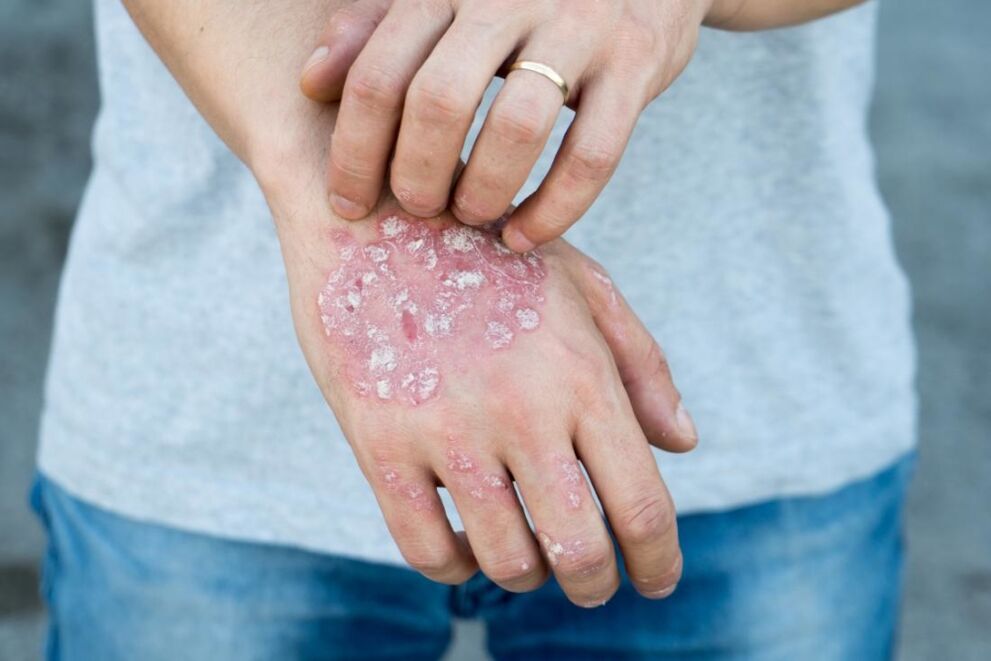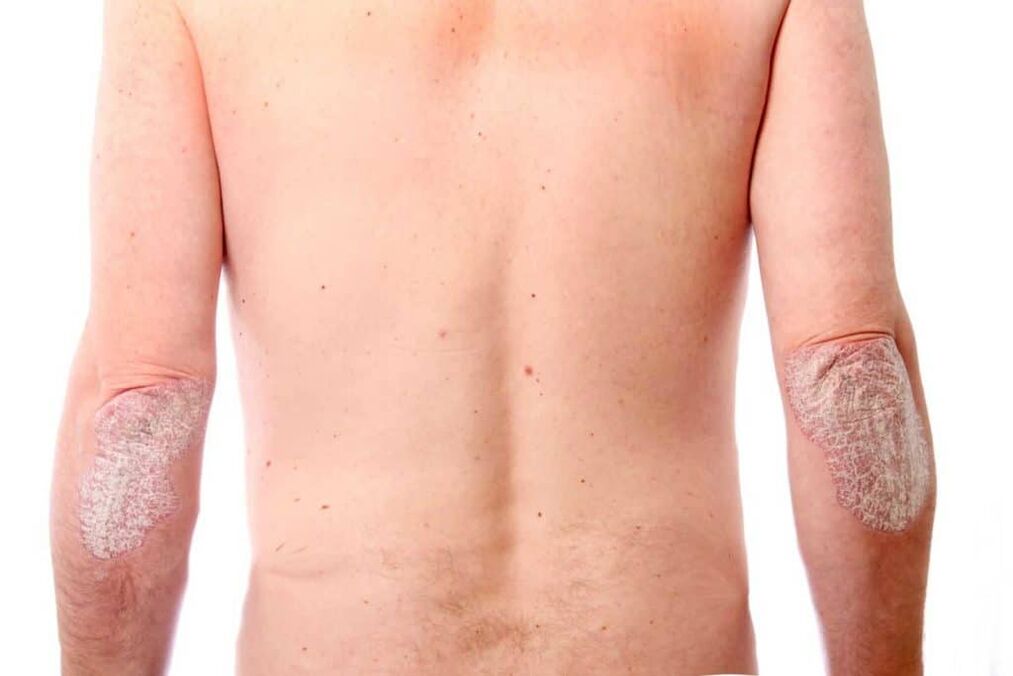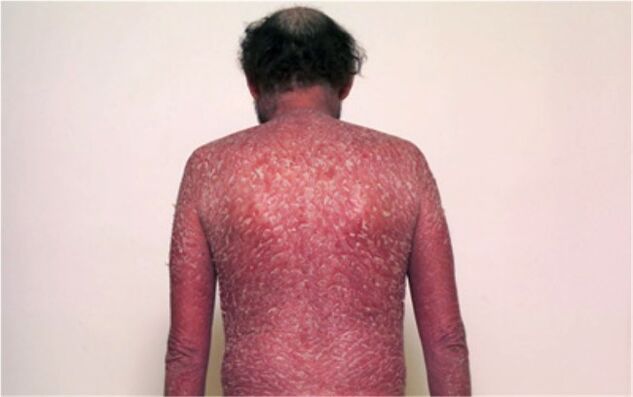Psoriasis is one of the most common chronic skin pathology in the world, and treatment problems are still urgent.According to statistics, in 2017, there were 130 ml of cases registered in the world: every twenty-four residents of the planet suffer from illness.Typically, the debut of pathology falls from 16 to 20 years, from 40 to 60 years.In 65% of patients, it was observed in a mild form with a slight plaque effect on the surface of the skin (up to 3%).The average degree of psoriasis suffered from 25% (up to 10% of skin area) and severity, with more than 10% of the surface affected - 8%.

The exact cause of the disease has not been studied.Parasitic infection, allergic susceptibility, hormonal imbalance, metabolic disease and genetics may cause the emergence of psoriatic plaques.
If parents are sick, the trend to develop psoriasis in childhood is 25%.Both - the probability increases to 50%.According to statistics, 4 out of 100 children in the world are psoriasis, with fewer cases of boys suffering from illness than girls at 25%.
The list of adverse factors also includes the negative effects of infectious diseases, neuropsychological harm, and the heat.
Due to the interaction of several external and internal causes, blood circulation violates the papillary layer of the dermis, from which replication of young and inadequate epidermal cells appears so quickly that they have no time to eventually mature, mature in surfaces, forming silver scales in the shape of plaques or falling shapes on the surface.
This is how the disease progresses, and over time they merge and turn into large spots.
Psoriasis continues all life and self-healing cases are single.The relief cycle during aggravation periods will be more common in autumn and winter.However, there are some cases that are uncertain (all seasons) and photosensitive (summer) types.
stage
During the pathological process of psoriasis, several periods and wavy routes occur as the cycle of aggravation and relief alternates.For experts, the diagnosis of the disease is not difficult: at different stages of pathological development, he has specific symptoms and a characteristic skin type.
Initial phase
At first, when the disease just started to appear, a rash (papules) the size of a pinhead appeared.In psoriasis, they are grouped on the skin of the limbs, without progression and will not change at first.These are called guard (responsibility) plaques.

The classic clinical manifestations in the initial stage form the psoriasis triad:
- Wax spots.The papules are covered with white patches with gray patches, loose and not well fixed.It can be easily scraped with a scraper.The scales peeled outside are similar to the smallest Starin substance that makes candles.
- Terminal movie.A smooth, shiny, juicy high blood rate surface is visible under the loose raid.This is the last floor you can leave.
- Bloody dew is the last sign of the triad.When the terminal membrane is damaged and externally exhibits appearing in the form of coagulated droplets of blood, it is formed, and these bloods do not merge with each other.
Psoriasis is a chronic disease that cannot be fully recovered.The main task of treatment is to achieve continuous, extended relief.After aggravation of inadequate treatment, it was observed every two to three months.The treatment of the initial stages of psoriasis is mild, and it begins with the use of conical decomposition of external products in the form of salicylic acid and lactic acid.
Drugs eliminate discomfort, inhibit excessive cell formation, and reduce inflammation and dissection.Over time, psoriasis becomes resistant (stable) to the effects of certain drugs.Therefore, the medicinal plan will be reviewed after a period of time.This method is called the technique of rotation-circle periodic change.
Progressive stage
The second stage of the disease is the actual peak of aggravation.

The first sign - peeling is located only in the middle of the papule, stirring along the pink edge.This is a symptom of growth when a single rash increases and merges.The second sign of progress becomes a symptom of skin reaction: 10-14 days after the skin injury, a new typical plaque appeared.Progressive psoriasis provides another symptom observed at other stages - it has different intensity.Treatment of progressive psoriasis is performed in hospitals, including:
- Drugs: antihistamines, non-replacement anti-inflammatory drugs, immunostimulators, vitamins.
- Physical Therapy: PUVA, UFO, application with paraffin, sulfide and ra bath.
After the patient is treated in a nursing home.In particular, in severe cases, prescribe corticosteroids and cell inhibitors.Psoriasis can affect the nail plate.They become fragile, dull, and rise to the bed.Often, this condition occurs even due to minor damage.
Fixed stage
After progression, the recovery of papules occurs around the end of week 4.It starts from the center to the periphery and the plaque obtains a characteristic annular form.Their colors become less intense and new constructions do not appear.The fixation stage of psoriasis will not cause special discomfort.The patient is not suffering and itchy.The treatment procedure remains the same.There is only one secondary adjustment to the goal: the opportunity to enter the final stage rather than the gradual stage of transitioning to psoriasis.

Fading stage
Remission occurs after complex and intensive care and includes the disease in the hidden phase.In the final stage, the peeled psoriasis disappears and the plaques gain a pale hue.They gradually resolve and merge with the skin.One exception - the elbows, knees, stomach and hips remain in what So calls "freezing".The remission period is an individual and can last from three months to several years.Patients with psoriasis should monitor themselves and first show signs of worsening to see a doctor and receive a treatment regimen.Although chronic diseases are prone to recurrence, psoriasis makes it possible for psoriasis to live a common and rich life.























